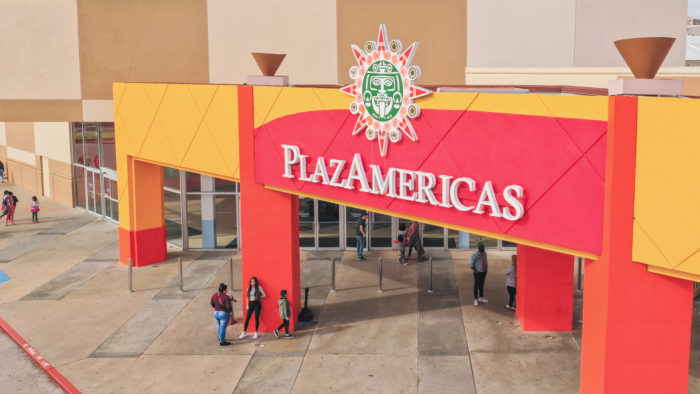
Margaret Mitchell has lived in Sharpstown for nearly her whole life, watching in dismay as stores closed in the neighborhood’s main shopping center and the property slid into disrepair, despite efforts by owners to make the mall more relevant to the changing, increasingly diverse area.
So, when she heard that new owners with deep roots in Houston were buying the property, she said she felt a sense of hope that the mall, which has long been central to the community, would be updated and revived, much as the wider neighborhood is undergoing its own revival.
“Investors are coming in and redoing houses and flipping them,” said Mitchell, president of the Sharpstown Civic Association, a nonprofit focused on safety and neighborhood beautification. “There have also been teardowns and brand new houses have been built.”
Last week, Houston commercial real estate firm Baker Katz purchased the former Sharpstown Center, now known as PlazAmericas, adding to increasing investment in the neighborhood that includes new retail developments at the northeast corner of Bellaire and U.S. 59 and along Fondren, as well as new buildings planned at Houston Baptist University.
Sharpstown was developed in the 1950s by Houston land developer Frank Sharp. It was one of Houston’s first master-planned communities where housing is mixed with shops, schools and parks. The architectural styles of the homes include post-World War II bungalows, traditional ranches and mid-century moderns.
Sharpstown, roughly bounded by the Westpark Tollway, the West Belt and Hillcroft and Bissonet streets, has a large population of seniors who bought homes there in the early days of the development. The area is among the city’s most diverse, with Hispanics representing 58 percent of the population and Asians 15 percent, according to data compiled in 2015 by city of Houston.
A stretch of Bellaire Boulevard, on which PlazAmericas is located, has become a center of Asian culture, with countless shops, restaurants and grocery stores.
The area has begun a transition in recent years, attracting millennials lured by the mid-cenutry architecture and the lower housing prices than other neighborhoods within the same proximity to downtown — about 15 minutes. The average price of a home this year was $212,482, up 6.4 percent from 2017, according to the Houston Association of Realtors.
Houston Baptist University at Fondren and the Southwest Freeway is helping drive the growth, planning to increase its undergraduate enrollment of more than 2,300 as it prepares to begin construction of new buildings. In December, the university received a $20 million donation to construct a new building to be used by the College of Science and Mathematics, College of Engineering and School of Nursing and Allied Health. In September, the university received a $10 million gift that funded the construction of another classroom building modeled after Philadelphia’s Independence Hall.
The new owners of the mall say they are hoping to both take advantage of an add to the momentum. The Sharpstown Center opened in 1961, but struggled in later decades as newer malls opened. About a decade ago, the mall was bought by a Philadelphia investment firm, RAIT Financial Trust, which refocused the mall’s offerings on the area’s diverse population, particularly Latinos.
As of now, the 840,000-square-foot mall at the Southwest Freeway and Bellaire, is about 70 percent leased. Mitchell said she’d like to see the property redeveloped as a community-based shopping area “with a little bit of everything.”
Baker Katz faces challenges in reviving the mall, including the property’s fractured ownership. Baker Katz is buying the mall’s largest section, but the anchor buildings that formerly housed Montgomery Ward, JC Penny and Macy’s have different owners. The purchase also does not include a 10-story building that rises from the property.
Each owner is bound by long-term agreements that prevent a full-scale redevelopment of the property.
“There’s not really any way to tear things down and start over,” Baker Katz Principal Kenneth Katz said at the time of the sale.
Baker Katz said it plans to upgrade the buildings it owns and improve operations, which in turn it hopes will increase occupancy. Justin Segal, president of Boxer Property Management Corp., which owns several office buildings in the area and managed the mall at one time, said that Baker Katz may have picked a good time to invest in the neighborhood. He said he is bullish on Sharpstown because of its location along some of the key crossroads of the Houston area and its multi-cultural population.
“If you put a pin on a map on the most diverse place in the most diverse city in the country, the pin would fall in the middle of PlazAmericas,” Segal said. “Basically every type of person lives within striking distance of that mall, and traffic counts are amazing.”
by Nancy Sarnoff
Houston Chronicle
Read the Original Article Here